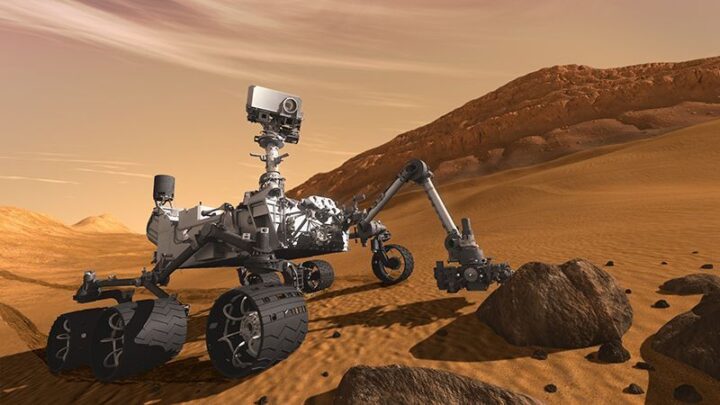In space systems, a proven design is only the first step toward meeting the application challenge. For example, adding just a few ounces to a component’s weight can translate to thousands of dollars in payload costs, and subsequent design iterations often call for the initial product to be replaced but with a lower weight. Another challenge? How to deal with harsh conditions. This blog post, the first in a series on motion components for space applications, will explore factors that must be addressed in partnership with a motion product specialist who has a long legacy of proven experience and application data from space missions.
An ideal motion component partner will impart their expertise to better determine the product elements that will perform reliably and those that will need modification or replacement before deployment. For weight savings, IKO works with space customers to achieve an optimal performance-to-weight ratio that keeps costs in line. Some “lightening” strategies can include choosing a smaller size product, using lighter-weight rolling elements in linear guides or adding extra holes to rails in addition to the mounting holes.
You’ll also need to account for harsh conditions like extreme temperatures, vacuum environments and high radiation, to name a few. While it’s certainly possible to find coatings that protect against these extremes, other conditions in space may prohibit their use. A motion component specialist with extensive knowledge about coatings in space can propose the right surface treatment for the job. For rust prevention on stainless steel, they may suggest a black chrome coating. Another option, fluorinated black chrome, offers even greater corrosion resistance on stainless steel compared to other materials.
Contamination and Corrosion Prevention
Without proper precautions, components will eventually degrade due to contamination. When space-bound products are developed in a cleanroom environment, be sure to seal the system as best as possible or isolate the functioning components so they are not exposed to additional contaminants. Your component specialist will walk you through accessories like non-contact seals, shields or end plates that are specially engineered for hostile or corrosive environments. For instance, a non-standard seal may be very close-gapped and, if stainless steel materials are used, can be engineered to create a labyrinth type barrier to prevent particle incursion.
Corrosion threatens or impacts motion devices in space applications. Even ground-based systems are often located near oceans where salt water can introduce corrosion to vital equipment. For these reasons, stainless steel can be a sensible material for motion devices. As mentioned earlier, your motion component specialist will recommend an appropriate coating for the application, such as corrosion-resistant black chrome or a fluorinated black chrome surface treatment that resists corrosion while preventing foreign matter from adhering to the part surface. When specifying protective coatings for linear guides, be sure to keep in mind that some areas such as track rails and slide units require extra fortification against corrosion.
Finally, ask your motion component manufacturer about your application’s thermodynamics. Material hardnesses can change at certain temperatures and, in turn, can also change a part’s load capacity. Also, consider whether a phase transformation is possible. What if the part will be used where there are temperature swings of 300 to 400 degrees, such as in a solar array? IKO can assess a component’s materials and understand their thermodynamics. From there, we can help identify if a problem could occur, if special clearances are required and how the temperatures affect, for example, bearing preloads.
Take a Motion Specialist With You on the Long Journey to an Ideal Space Component
At IKO, we’re equipped to work beside you over the long haul, engaging with you through the many rounds of R&D and months and years necessary to develop an ideal product for space. Our experts will assess your application requirements, share past experiences and create predictive models to point the way to success. In addition to lending our expertise to the project, we have a large roster of machining centers and several means of obtaining specialty materials. These resources give us the flexibility to quickly make modifications, mockups or even create a standard part for testing. And, we can provide specialty coatings or change a part’s physical composition to better achieve its motion requirements in the application.
For more information, please visit www.ikont.com.



